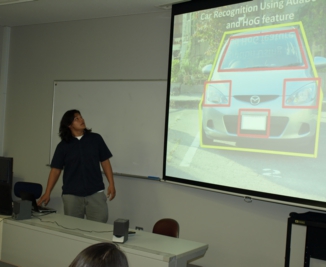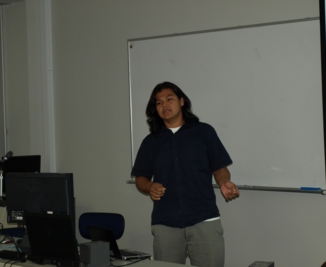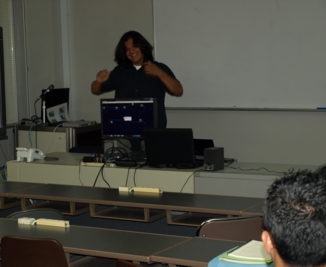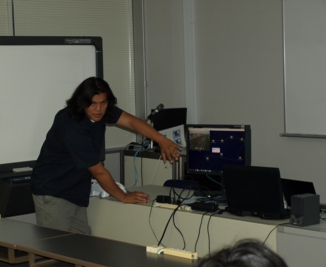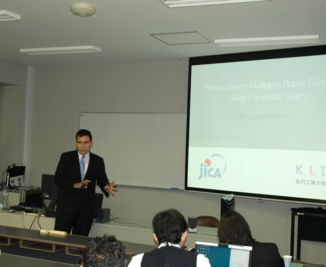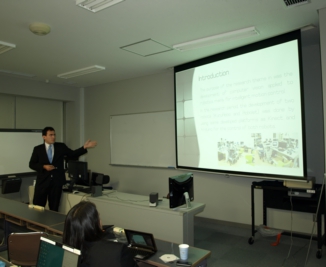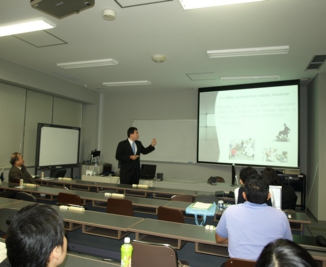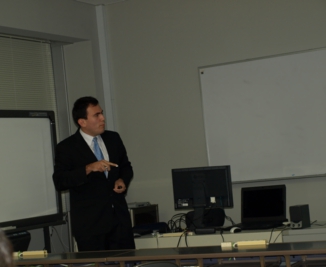Title:Car Regognition using Adaboost and Hog Feature
Author: William Ricardo Tzuc Panti.
Abstract:
In our daily life we are bound to object detection task. One day in the morning preparing the breakfast you easily can recognize between the food and vegetables and the cooking tools, you can be in the middle of the street and recognize the different models and kind of cars. We as humans are very good at object recognition. More important we easily and quickly can learn to recognize and classify new instances of objects and classes of objects. Unfortunately build a system that can be able to do recognition and classification of objects is a difficult task and yet more to do a system that can identify and classify new objects.
In this article he explore the different machine learning algorithms that can perform key point recognition, the learning of the selected components, and the combination of the component detection in order to determine whether or not there is an advantage in building hierarchical classifiers for a broad set of object classes.
In conclusion is necessary the use of machine learning and some feature characteristic extraction for do recognition task, but this is only for static data, if you want to do dynamic recognition you have to use or feed the machine learning with a lot of movement data and the recognition is not going to be very accurate because the point of view is important, is not the same see the car from the side that see the front view where you only have the view of the windshield, the front lights and the plate and the side view you cannot see the windshield, the plate or the front lights, you can only see the tires and the windows. In other words recognition car in movement is very complex and yet more complex to solve the occlusion between cars.
Title:Robotics with Intelligent Robot Control using Computer Vision
Author: Marco Octavio Mascorro
Abstract:
The purspose of the research theme in Nakazawa Laboratory is the development of computer vision applied to robotics . In this research period, the development of two robots was done by using some developed platforms as Kinect and Arduino for the control of both robots.
KuruRobo, autonomous robotic wheelchair
KuruRobo is an autonomous robotic wheelchair that helps disabled people that have problem manipulating joysticks of normal electric wheelchairs.
KuruRobo assists people for taking them for one place to another, avoiding obstacles and self-positioning for indoor use without GPS or human intervention or manipulation.
The purpose of KuruRobo is to assist disabled people with the benefits of computer vision, showing easy methods and non-expensive equipment or tools like Microsoft Kinect Sensor that can perform difficult tasks such as inside navigation and self-position estimation without GPS.
The KuruRobo uses the camera and a depth sensor from the Kinect as main input device for human recognition, shape detection, avoiding obstacles and inside navigation. The programming is done by the official release of Microsoft Kinect SDK in C++. The recognition of human bodies allows KuruRobo to receive instructions with the movement of body parts such as people tracking, that allows the wheelchair to follow an specific person.
KuruRobo has a robotic head for the communication between the robotic wheelchair and people
Robolet, a Nuclear Inspection Robot
Robolet is humanoid Robot that can be applied for inspection and monitoring in radioactive and hazardous environments for people. Robolet can transmit the radiation levels of its location in real time, perform some human tasks and receive commands or orders by its camera and depth sensor for control purposes.
The purpose of Robolet is to replace dangerous tasks that human perform in hazardous environments and to demonstrate the abilities that can be done by computer vision.
The Robot uses a camera and a depth sensor from the Microsoft Kinect sensor for human recognition, shape detection and obstacle recognition. The programming is done by the official release of
Microsoft Kinect SDK in C++. The recognition of human bodies allows the Robot to receive instructions with the movement of body parts.
The robot is equipped with a Geiger counter on the left hand that can measure beta and gamma rays coming from any radioactive source. The measurement is wireless transmitted in real time to a computer in other location.

 HOME
HOME
